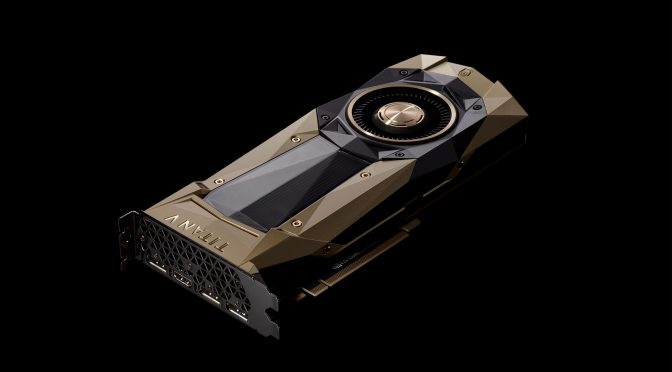NVIDIA has released a brand new driver for its graphics cards. According to the release notes, the NVIDIA GeForce 388.59 WHQL driver offers optimal performance in Fallout 4 VR. Moreover, this driver adds official support for the newly announced NVIDIA TITAN V GPU.
The NVIDIA TITAN V is the most powerful graphics card NVIDIA has ever created. This new graphics card uses the Volta chip, features 21 billion transistors, and is priced at $2999.
The NVIDIA TITAN V comes with 12GB of HBM2, sports a base clock at 1200Mhz (that gets boosted at 1455Mhz), packs 5120 CUDA cores, 80 streaming multiprocessors, 6 Graphics Processing Clusters and offers 652.8 GB/s of total memory bandwidth and 384 GigaTexels/sec of texture rate.
The NVIDIA GeForce 388.59 WHQL driver also addresses a flickering that could occur on the internal G-Sync 120 Hz panel when G-Sync was enabled on GeForce GTX1080 GPUs.
Those interested can download this new driver from here. You can also read the complete changelog for this new driver below.
NVIDIA GeForce 388.59 WHQL Driver Release Notes:
Game Ready
- Provides the optimal gaming experience for Fallout 4 VR.
New Product Support
- Added support for the NVIDIA TITAN V.
Software Module Versions
- nView – 148.92
- HD Audio Driver – 1.3.35.1
- NVIDIA PhysX System Software – 9.17.0524
- GeForce Experience – 3.11.0.73
- CUDA – 9.0
Fixed Issues
- [GeForce GTX 1080][Notebook][G-Sync]: Flickering may occur on the internal G-Sync 120 Hz panel when G-Sync is enabled.

John is the founder and Editor in Chief at DSOGaming. He is a PC gaming fan and highly supports the modding and indie communities. Before creating DSOGaming, John worked on numerous gaming websites. While he is a die-hard PC gamer, his gaming roots can be found on consoles. John loved – and still does – the 16-bit consoles, and considers SNES to be one of the best consoles. Still, the PC platform won him over consoles. That was mainly due to 3DFX and its iconic dedicated 3D accelerator graphics card, Voodoo 2. John has also written a higher degree thesis on the “The Evolution of PC graphics cards.”
Contact: Email

